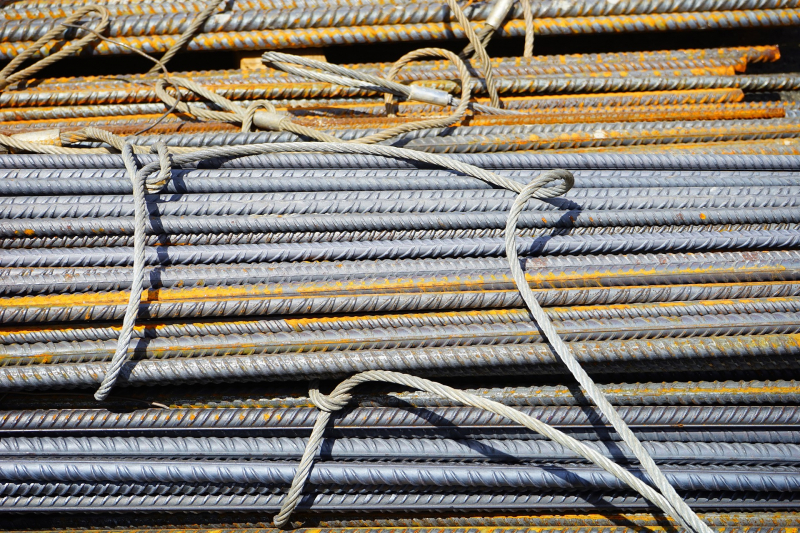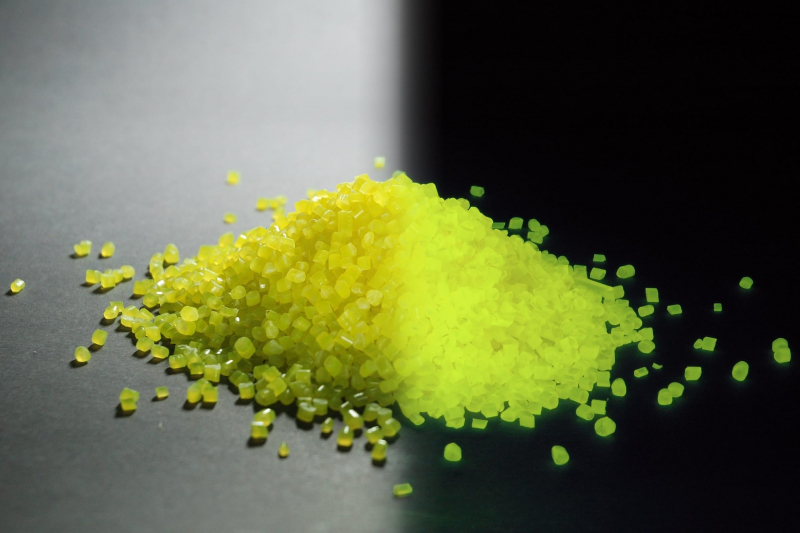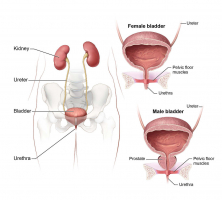Top 10 Best Books On Materials Science
Materials science is a multidisciplinary field that encompasses physics, chemistry, engineering, and more. It deals with the discovery, design, and application ... read more...of materials, including metals, ceramics, polymers, and composites. If you're interested in learning more about materials science or pursuing a career in the field, there are many great books to choose from. In this article, we'll explore some of the best books on materials science, covering topics such as the structure and properties of materials, materials processing and fabrication, and materials applications in various industries.
-
Materials Science and Engineering is a rapidly developing field that seeks to understand the fundamental properties of materials and how these properties can be manipulated and optimized to design and create new materials with specific properties and functionalities. It is an interdisciplinary field that draws upon the principles of physics, chemistry, and engineering to develop new materials and technologies for a wide range of applications, including electronics, energy, healthcare, transportation, and more.
One of the most widely used textbooks in the field of Materials Science and Engineering is the book by William D. Callister Jr. and David G. Rethwisch, titled "Materials Science and Engineering: An Introduction". The book provides a comprehensive and accessible introduction to the field, covering the fundamental principles of materials science and engineering, including crystal structures, defects, phase diagrams, mechanical properties, thermal properties, electrical properties, magnetic properties, and more.
William D. Callister Jr. is a renowned materials scientist and engineer, known for his research on the properties of materials, particularly in the areas of ceramics, metals, and polymers. He has published numerous research articles and books on materials science and engineering, and has received several awards and honors for his contributions to the field.
The book "Materials Science and Engineering: An Introduction" is designed for undergraduate students in materials science and engineering, as well as for students in related fields such as mechanical engineering, electrical engineering, and chemical engineering. Among the best books on materials science, the book provides a solid foundation in the principles of materials science and engineering, and includes numerous examples, problems, and case studies to help students apply these principles to real-world problems and applications. With its clear and concise writing style, comprehensive coverage, and practical approach, this book is an essential resource for anyone interested in the field of materials science and engineering.
Author: David G. Rethwisch and William D. Callister Jr.
Link to buy: https://www.amazon.com/Materials-Science-Engineering-William-Callister/dp/1118324579/
Ratings: 4.3 out of 5 stars (from 430 reviews)
Best Sellers Rank: #157,812 in Books
#26 in Materials Science (Books)
#4,642 in Textbooks (Books)

Photo by CDC on Unsplash Video: tso niew Yang's Youtube Channel -
Stuff Matters: Exploring the Marvelous Materials That Shape Our Man-Made World is a fascinating book written by Mark Miodownik, a materials scientist and engineer. In this book, Miodownik takes readers on a journey through the science behind the everyday materials that we often take for granted, such as steel, glass, and concrete, and shows how these materials have shaped our modern world.
Miodownik's passion for materials science shines through in his writing as he explores the history, properties, and uses of materials in an engaging and accessible way. He weaves together personal anecdotes, historical anecdotes, and scientific explanations to create a narrative that is both informative and entertaining.
In the introduction of Stuff Matters, Miodownik sets the stage for what's to come by describing his personal experience with materials science. He vividly recalls a moment from his childhood when he discovered the wonders of metalworking and was mesmerized by the way he could transform a piece of metal into a shiny, new object. This experience sparked his interest in materials science and led him on a journey of discovery that culminated in the writing of this book.
Throughout the introduction, Miodownik emphasizes the importance of materials science in our everyday lives, pointing out that nearly every aspect of our modern world is shaped by the materials that we use. From the skyscrapers that dominate our cities to the smartphones that we carry in our pockets, materials science is at the heart of everything we do.
Overall, Stuff Matters is a captivating exploration of the materials that make up our world, written by a passionate and knowledgeable expert in the field. Whether you're a scientist, engineer, or simply someone with a curious mind, this book is sure to entertain and educate.
Author: Mark Miodownik
Link to buy: https://www.amazon.com/Stuff-Matters-Exploring-Marvelous-Materials/dp/0544236041
Ratings: 4.6 out of 5 stars (from 1437 reviews)
Best Sellers Rank: #711,116 in Books
#73 in Inorganic Chemistry (Books)
#236 in Materials Science (Books)
#18,018 in World History (Books)

Photo by ThisisEngineering RAEng on Unsplash Video: onte Audiobooks's Youtube Channel -
Introduction to Materials Science for Engineers is an essential textbook for any student pursuing a degree in engineering or related fields. The book, written by James F. Shackelford, is currently in its 8th edition and has been a staple in engineering curriculums for decades. Shackelford is a distinguished professor of materials science and engineering at the University of California, Davis, and has been recognized for his contributions to the field by numerous organizations, including the American Society for Metals and the Materials Research Society.
The book begins by introducing the fundamental concepts of materials science, including the structure of materials, mechanical properties, and thermodynamics. It then covers a wide range of materials, including metals, ceramics, polymers, and composites, and discusses their properties and applications in engineering. The 8th edition has been updated to include new topics such as graphene, metamaterials, and additive manufacturing, as well as expanded coverage of nanomaterials and biomaterials. The book is considered one of the best books on materials science.
One of the strengths of Introduction to Materials Science for Engineers is its focus on real-world applications. The book includes numerous case studies and examples that demonstrate how materials science principles can be applied in engineering design and problem-solving. The text is also supplemented with online resources, including interactive simulations and animations, to help students better understand the concepts presented in the book.
Overall, Introduction to Materials Science for Engineers is an excellent resource for students and professionals alike who are interested in understanding the fundamental principles of materials science and their applications in engineering. Shackelford's clear writing style and real-world examples make the book accessible to a wide range of readers, from undergraduate students to practicing engineers.
Author: James Shackelford
Link to buy: https://www.amazon.com/Introduction-Materials-Science-Engineers-8th/dp/0133826651
Ratings: 4.1 out of 5 stars (from 70 reviews)
Best Sellers Rank: #911,845 in Books
#112 in Industrial Engineering (Books)
#368 in Materials Science (Books)
#2,070 in Industrial Manufacturing Systems

Photo by ThisisEngineering RAEng on Unsplash 
Photo by Valery Sysoev on Unsplash -
The New Science of Strong Materials, written by J.E. Gordon, is a classic text that explores the science behind the strength and durability of materials. Originally published in 1968, this book has remained a seminal work in the field of materials science and engineering.
J.E. Gordon was a materials scientist and engineer who specialized in the study of strength and mechanics of materials. He was born in 1913 in England and received his education at Cambridge University. After serving in World War II, Gordon became a professor at the University of Reading where he conducted groundbreaking research on the strength and behavior of materials. He was a prolific writer and authored several books, including The New Science of Strong Materials, Structures, or Why Things Don't Fall Down, and The Science of Structures and Materials.
In The New Science of Strong Materials, Gordon delves into the fascinating world of materials science, explaining the properties of different materials and what makes them strong or weak. He covers a wide range of materials, including metals, ceramics, plastics, and composites, and explores their structure and behavior at both the macroscopic and microscopic levels. Gordon's writing is engaging and accessible, making complex scientific concepts easy to understand.
The book is divided into six chapters, each focusing on a different aspect of materials science. The first chapter covers the basic concepts of materials science and introduces readers to the different types of materials. The subsequent chapters explore the properties of materials, the behavior of materials under stress, the failure of materials, and the design of strong materials.
Overall, The New Science of Strong Materials is a must-read for anyone interested in materials science and engineering. Gordon's insights and expertise provide a valuable foundation for understanding the properties of materials and the design of strong and durable structures.
Author: James Edward Gordon
Link to buy: https://www.amazon.com/New-Science-Strong-Materials-Princeton/dp/0691125481
Ratings: 4.7 out of 5 stars (from 70 reviews)
Best Sellers Rank: #1,418,301 in Books
#69 in Strength of Materials Engineering
#684 in Materials Science (Books)
#1,631 in History of Technology

Photo by Ben Wicks on Unsplash 
Photo by Pavel Neznanov on Unsplash Get -
"The Rare Metals War" is a compelling book written by Guillaume Pitron that delves into the hidden world of the global rare metals industry. The book is a detailed and thought-provoking analysis of the relationship between rare metals and digital technologies.
Guillaume Pitron is a French journalist and documentary filmmaker who has won numerous awards for his works. He has reported extensively on environmental and economic issues, and his expertise shines through in this book. Through his research, Pitron uncovers the hidden costs and impacts of the digital revolution, exposing the shocking truths about the industry's reliance on rare metals.
In the book, Pitron discusses how the world's dependence on rare metals has led to the creation of a new kind of "resource war." He explains how these metals, which are essential in the manufacturing of smartphones, electric cars, and other electronic gadgets, are mostly found in China, making it the dominant player in the global rare metals industry. This concentration of supply leaves the rest of the world vulnerable to China's economic and geopolitical influence.
Pitron's insightful analysis also highlights the devastating environmental consequences of rare metals mining. He explores the complex geopolitical dynamics and the challenges of achieving a more sustainable and ethical approach to sourcing these valuable metals.
Overall, "The Rare Metals War" is an eye-opening and important book that sheds light on a critical issue that is often overlooked. Pitron's deep research and engaging storytelling make the book a must-read for anyone interested in understanding the true costs of the digital age.
Author: Guillaume Pitron
Link to buy: https://www.amazon.com/Rare-Metals-War-digital-technologies-ebook/dp/B085RMQNLC/
Ratings: 4.5 out of 5 stars (from 352 reviews)
Best Sellers Rank: #132,795 in Kindle Store
#1 in Metallurgy Engineering
#2 in Energy Policy (Kindle Store)
#9 in Energy Policy (Books)

Photo by Alex Jones on Unsplash 
Photo by dominik hofbauer on Unsplash -
Mechanics of Materials For Dummies, written by James Allen, is a comprehensive guide to understanding the principles of mechanics and materials. This book is designed to help readers, especially students, gain a practical understanding of the subject, making it easier for them to apply the concepts they learn to real-world situations.
James Allen is a professor of mechanical engineering with over 20 years of experience in teaching mechanics of materials. He has also authored several papers and books in the field, including The Essentials of Mechanics of Materials and Structural Mechanics: Loads, Analysis, Design, and Materials.
The book's introduction explains the basic principles of mechanics and materials, and how these concepts are used in engineering applications. The author also provides an overview of the contents of the book, which includes chapters on stress and strain, torsion, bending, and deformation of beams. Additionally, the book covers the different types of materials used in engineering, including metals, ceramics, polymers, and composites.
Throughout the book, readers will find practical examples and exercises that help to reinforce the concepts they learn. The author also uses a conversational tone to explain complex ideas in a way that is easy to understand. This makes Mechanics of Materials For Dummies a great resource for students who are new to the subject or those who need a refresher.
Overall, Mechanics of Materials For Dummies is a must-read for anyone who wants to gain a practical understanding of mechanics and materials. With its clear explanations, practical examples, and exercises, this book is sure to be a valuable resource for students and professionals alike.
Author: James H. Allen III
Link to buy: https://www.amazon.com/Mechanics-Materials-Dummies-James-Allen/dp/0470942738/
Ratings: 4.5 out of 5 stars (from 225 reviews)
Best Sellers Rank: #89,757 in Books
#1 in Strength of Materials Engineering
#3 in Nanostructures in Physics
#9 in Materials Science (Books)

Image by S. Nagel from Pixabay 
Image by Pavlo from Pixabay -
Mechanics of Materials, 10th Edition by Russell Hibbeler is a widely-used textbook for undergraduate students studying engineering and related fields. The book covers the principles of mechanics and the behavior of materials under different loading conditions. It is a comprehensive guide that offers a thorough understanding of the concepts and their applications.
Russell C. Hibbeler is a Professor Emeritus of structural engineering at the University of Louisiana at Lafayette. He received his Bachelor's and Master's degrees from the University of Illinois at Urbana-Champaign and his PhD from Northwestern University. He has authored numerous textbooks in the field of engineering mechanics, including Engineering Mechanics: Statics and Dynamics, Mechanics of Materials, and Structural Analysis. Hibbeler is known for his clear and concise writing style, and his ability to explain complex concepts in a way that is easy for students to understand.
The 10th edition of Mechanics of Materials begins with an introduction to the fundamental concepts of stress and strain, including the concept of elastic deformation and the deformation of axially loaded members. The book then covers topics such as torsion, bending, and shear stresses in beams, deflection of beams, and analysis of stress and strain in two dimensions. It also covers topics such as stress transformations, strain energy, and failure criteria for various types of materials.
The book includes a variety of examples and problems, as well as detailed explanations of the concepts and their applications. It is designed to help students develop a strong foundation in mechanics of materials, and to prepare them for advanced studies in the field. The 10th edition of Mechanics of Materials is a valuable resource for students, professors, and practicing engineers alike.
Author: Russell Hibbeler
Link to buy: https://www.amazon.com/Mechanics-Materials-10th-Russell-Hibbeler/dp/0134319656/
Ratings: 4.4 out of 5 stars (from 370 reviews)
Best Sellers Rank: #184,938 in Books
#5 in Strength of Materials Engineering
#6 in Nanostructures in Physics
#34 in Materials Science (Books)

Image by Emilian Robert Vicol from Pixabay 
Image by Hans from Pixabay -
The Science and Engineering of Materials, authored by Donald R. Askeland and Wendelin J. Wright, is a comprehensive textbook on the fundamentals of materials science and engineering. This book serves as an excellent resource for students pursuing degrees in materials science, engineering, and related fields. The book is currently available for sale on Amazon, and it has received rave reviews from students and professionals alike.
Donald R. Askeland is a professor emeritus in the Department of Materials Science and Engineering at the University of Missouri-Rolla. He is a fellow of ASM International and has received numerous awards for his contributions to materials science and engineering education. Wendelin J. Wright is a professor at Bucknell University with a joint appointment in the departments of mechanical engineering and chemical engineering
Among the best books on materials science, The Science and Engineering of Materials covers a broad range of topics, including the structure of materials, properties of materials, and processing of materials. The book is organized into 22 chapters and begins with an introduction to materials science and engineering. It then covers atomic structure, crystal structure, imperfections in solids, diffusion, mechanical properties of materials, phase diagrams, and phase transformations. The latter part of the book covers electrical, magnetic, optical, and thermal properties of materials, as well as corrosion and degradation of materials.
This textbook provides a thorough understanding of the principles underlying materials science and engineering. The authors have used clear and concise language, and they have included numerous examples, illustrations, and exercises to reinforce the concepts covered in each chapter. The Science and Engineering of Materials is an excellent resource for students and professionals who are interested in the science and engineering of materials.
Author: Wendelin J. Wright and Donald R. Askeland
Link to buy: https://www.amazon.com/Science-Engineering-Materials-Donald-Askeland/dp/1305076761/
Ratings: 4.2 out of 5 stars (from 83 reviews)
Best Sellers Rank: #826,553 in Books
#308 in Materials Science (Books)
#947 in Engineering (Book)

Photo by Callum Hill on Unsplash 
Photo by Ethan Bodnar on Unsplash -
Liquid Rules: The Delightful and Dangerous Substances That Flow Through Our Lives is a fascinating book by Mark Miodownik that explores the hidden world of liquids and how they shape our lives. Miodownik, a materials scientist and professor at University College London, is also the author of the critically acclaimed book Stuff Matters.
In Liquid Rules, Miodownik takes readers on a journey through the science, history, and cultural significance of liquids. From the water that sustains us to the coffee we drink in the morning, from the blood that flows through our veins to the oil that powers our cars, liquids are everywhere in our lives. And yet, we often take them for granted.
Miodownik's writing is both informative and entertaining, as he weaves together stories, anecdotes, and experiments to illustrate the properties of liquids and the role they play in our world. He explains why some liquids are more viscous than others, how bubbles form in champagne, and why molten lava behaves the way it does.
But Liquid Rules is not just a science book; it also delves into the cultural and historical significance of liquids. Miodownik explores the role of alcohol in society, from the ancient Egyptians to Prohibition-era America, and the symbolic significance of water in different cultures and religions.
Overall, Liquid Rules is a delightful and insightful book that will change the way you look at the liquids that flow through our lives. Whether you're a scientist, a history buff, or simply curious about the world around you, this book is sure to delight and educate.
Author: Mark Miodownik
Link to buy: https://www.amazon.com/Liquid-Rules-Delightful-Dangerous-Substances-ebook/dp/B073XD2KHP
Ratings: 4.6 out of 5 stars (from 397 reviews)
Best Sellers Rank: #322,837 in Kindle Store
#9 in Inorganic Chemistry (Kindle Store)
#18 in History of Physics
#24 in Inorganic Chemistry (Books)

Image by PublicDomainPictures from Pixabay Video: Charles Haywood's Youtube Channel -
Foundations of Materials Science and Engineering is a comprehensive textbook written by William F. Smith and Javad Hashemi. Smith was a professor of engineering at the University of California, Santa Barbara, and a pioneer in the field of materials science and engineering. Hashemi is also a professor of engineering, currently teaching at Texas Tech University, with research interests in mechanical behavior of materials, nanomechanics, and materials characterization.
The book serves as an introduction to the fundamental principles of materials science and engineering, covering topics ranging from crystal structures and imperfections to mechanical properties and processing of materials. With a clear and concise writing style, the authors provide a strong foundation for students to understand the relationships between materials structure, properties, and processing.
The first part of the book covers the structure of materials, including crystal structures, imperfections, and phase diagrams. The second part focuses on mechanical properties, including elasticity, plasticity, fracture, and fatigue. The final part covers materials processing, including casting, welding, and forming.
The book also includes numerous examples and exercises to reinforce the concepts covered in each chapter, as well as case studies that demonstrate the real-world applications of materials science and engineering. With its emphasis on the fundamental principles of the field, this book is an excellent resource for undergraduate students in materials science and engineering, as well as for professionals in related fields who are seeking to deepen their understanding of materials.
Author: William Smith and Javad Hashemi
Link to buy: https://www.amazon.com/Foundations-Materials-Science-Engineering-Professor/dp/0073529249
Ratings: 4.3 out of 5 stars (from 73 reviews)
Best Sellers Rank: #1,175,464 in Books
#517 in Chemical Engineering (Books)
#536 in Materials Science (Books)
#3,052 in Chemistry (Books)

Image by Adrian Malec from Pixabay 
Image by Maria Maltseva from Pixabay































